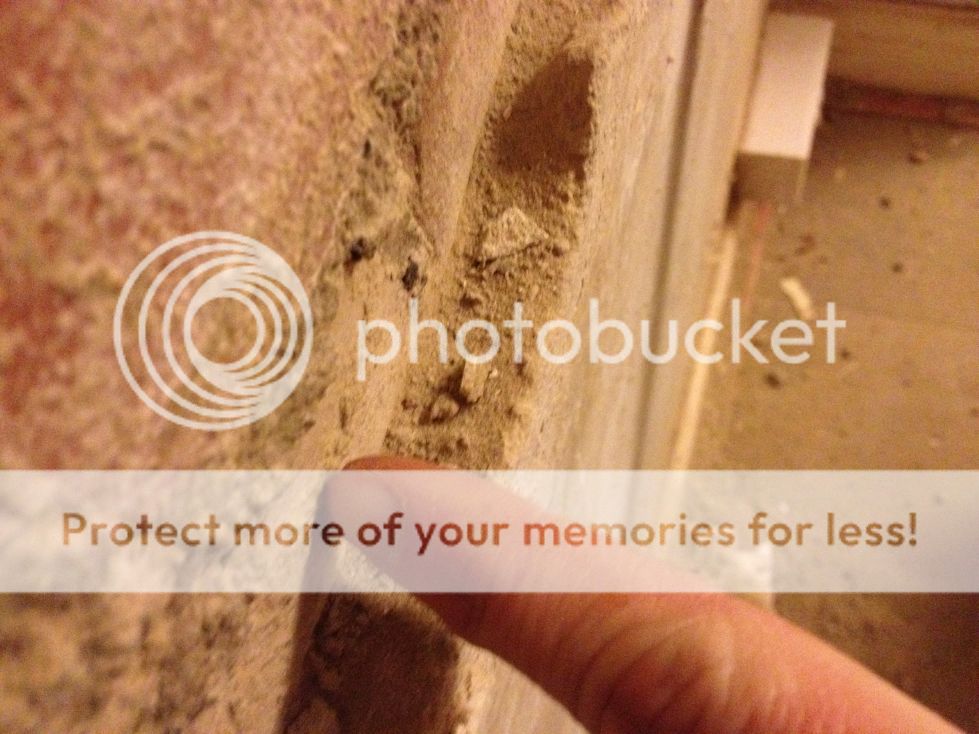- Joined
- 2 Feb 2014
- Messages
- 412
- Reaction score
- 2
- Country

Had someone out to look at our damp issue. We'd been advised to patch replace the plaster.
Plasterer came out to assess the work & advised against patching in as it may sort the damp, but it may not & if it doesn't then we'd be back to square 1, just higher up the wall. It was agreed that the wall would just get re-done.
It's been the Mrs who's dealt with this chap & at 11pm on a Sunday we can't be asking him, so i thought i'd see here if anyone could make sense of this...
He mentioned putting in 13mm plasterboards & then skimming & dotting & dabbing (terms are lost on me!). I work for a builders merchants & know no 13mm boards, so i assume he meant 12.5mm.
For one i'm not sure why he's planning on using boards anyway. Right now it's plaster on there (with some fine hairs in it - so i'm assuming original stuff). I assumed anyone would just go like-for-like & plaster it. 12.5mm boards will pad it all out quite a bit & probably result in us needing new skirting.
Which makes me wonder - why 12.5mm board & not 9.5mm board? & how'd you fix these things to a wall without battens padding it out further?
I'd started removing some of the stuff myself:

A lot of it came away extremely easily. I'm getting to the stage now where it's more of a challenge to remove.
The grey plaster on the lower half is actually sound. There's no damp there at all & that stuff is bloody tough. Crowbar didn't really want to know about it. I'd assume leave it, but if boards are getting used then surely this would have to go also. Just wondering - why create work?
Don't know how thick that stuff is but seems reasonably thick:

What do you reckon to this?
As i say, the Mrs has dealt with this chap so i can't really get in touch with him at the moment. It's just something that was getting me thinking today - why the boards, why not just plaster, why 12.5mm & not 9.5mm. I know boards will allow for an easier smoother finish, but then that's creating work by surely needing to remove the sound lower half?
Plasterer came out to assess the work & advised against patching in as it may sort the damp, but it may not & if it doesn't then we'd be back to square 1, just higher up the wall. It was agreed that the wall would just get re-done.
It's been the Mrs who's dealt with this chap & at 11pm on a Sunday we can't be asking him, so i thought i'd see here if anyone could make sense of this...
He mentioned putting in 13mm plasterboards & then skimming & dotting & dabbing (terms are lost on me!). I work for a builders merchants & know no 13mm boards, so i assume he meant 12.5mm.
For one i'm not sure why he's planning on using boards anyway. Right now it's plaster on there (with some fine hairs in it - so i'm assuming original stuff). I assumed anyone would just go like-for-like & plaster it. 12.5mm boards will pad it all out quite a bit & probably result in us needing new skirting.
Which makes me wonder - why 12.5mm board & not 9.5mm board? & how'd you fix these things to a wall without battens padding it out further?
I'd started removing some of the stuff myself:

A lot of it came away extremely easily. I'm getting to the stage now where it's more of a challenge to remove.
The grey plaster on the lower half is actually sound. There's no damp there at all & that stuff is bloody tough. Crowbar didn't really want to know about it. I'd assume leave it, but if boards are getting used then surely this would have to go also. Just wondering - why create work?
Don't know how thick that stuff is but seems reasonably thick:

What do you reckon to this?
As i say, the Mrs has dealt with this chap so i can't really get in touch with him at the moment. It's just something that was getting me thinking today - why the boards, why not just plaster, why 12.5mm & not 9.5mm. I know boards will allow for an easier smoother finish, but then that's creating work by surely needing to remove the sound lower half?
